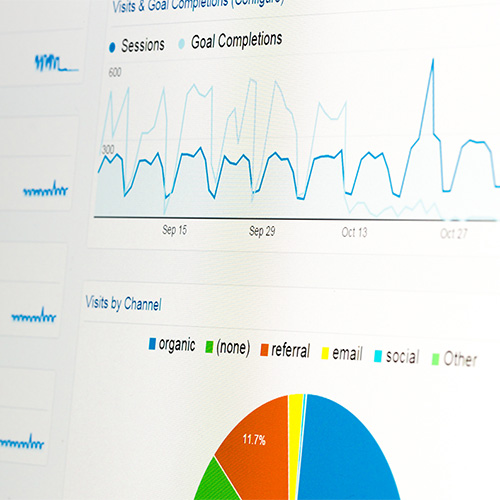As of September 2017, Google began advising to make all websites responsive in preparation for their 2018 release of their Mobile-First Indexing update.
"Here are some recommendations on how to move from separate urls to one responsive URL in a way that gives your sites the best chance of performing well on Google's search results."
- Google Webmaster Central Blog
While the need for one responsive site, versus two separate desktop and mobile sites has been written about since Google's first announcement in 2015; website owners now must heed Google's warnings to maintain their search ranking.
Google released their latest "Mobile-First Index" update in early 2018.
What Is Mobile-First?
Most are probably aware of Google's Mobile-First Ranking initiative that's been in place since late-2016, and closely followed their 2015 mobile-friendly announcement sparking "Mobilegeddon 1.0 & 2.0".
- What Mobile-First Ranking means: any website that is mobile-friendly (all other factors being equal) will rank above another site that is not mobile-friendly.
- Now that the 2018 Mobile-First Index update is in effect: Google will begin indexing the content of mobile-friendly sites, in preference of content found on the desktop version of the site.
- For those businesses that have a mobile-only, and a desktop site: they need to combine them into one responsive website.
How Will Mobile-First Affect Search Results?
Even after Google implemented their mobile-friendly requirements, they historically still indexed the content of the main desktop websites as their basis for search results. Mobile content was merely used as a supplement, if at all. However, this is no longer the case.
As of the 2018 update, Google is using the mobile site's content as the index of preferred search ranking material.
This means that if the company's mobile version of the website has minimal content compared to the main desktop site, then the website's ranking could decrease in natural/organic search results.
Because over 80% of all searches are done on mobile devices, Google warned in late 2016 they were heading in this direction:
"To make our results more useful, we’ve begun experiments to make our index mobile-first."
- Doantam Phan, Google product manager
Google is serious about the user's experience, and is gearing all preferences towards the mobile device and speed.
In a post, Google's product manager, Doantam Phan wrote:
"Although our search index will continue to be a single index of websites and apps, our algorithms will eventually primarily use the mobile version of a site’s content to rank pages from that site, to understand structured data, and to show snippets from those pages in our results."
Again, now that this update is in effect, businesses with two sites, (a regular desktop site, and a separate mobile-only site) need to be concerned with the fact that the mobile site's content will be indexed, and preferred, OVER a more content-rich desktop version.
How Responsive Design Works
Depending on the size, making a website responsive (which is intrinsically mobile-friendly) can take time. In most cases, nearly every page of a site will need to be modified/touched to create a truly responsive design.
Responsive Web Design is fluid, loads on any screen size, offering the user a good experience regardless of screen size or device.
Factors that determine whether a website is responsive or not, are:
- Content should be easily readable on a website without having to pinch and zoom
- Navigation menus should be easily rendered on mobile & small-screen devices
- Anchor text (text in links) should have plenty of space so as to avoid "fat fingers" touching multiple links
- Fast page speed and load time over mobile and wireless networks
- Avoid software that is not common on mobile devices such as Flash
- Sizing content so that readers do not have to scroll horizontally
Pro's & Con's To Responsive Design
While initially developing a responsive website can be time consuming, the benefits and ease of having one site to manage in the future, regardless of device, makes ongoing maintenance and reporting a great deal easier.
From a "natural & organic SEO" point-of-view responsive is ideal because:
- There are more chances for inaccuracies when there are two different sites
- One site may not have the most recent content versus the other
- There are two separate sites versus one responsive site
- One site may not have all the same functionality as the other
Besides no longer having to manage two websites (mobile-only and desktop), having one responsive website makes it easier to adopt new practices and technologies as Google, or others release new requirements and capabilities.
Some examples of technologies currently being released and affecting site ranking today are: AMP for website loading speed, structured data for advanced search features, hreflang for internationalization, among others.
Summarizing Google's Responsive Requirements
Google's ultimate goal is to have a single site that's responsive regardless of device; the true definition of Responsive Website Design.
Google is coming from a purely "futuristic" point of view; to make sure that websites are built to respond to ANY new technology, whether smart phones, tablets, watches, or any other future technology that arises.













